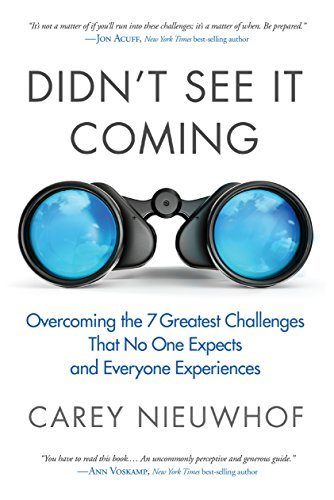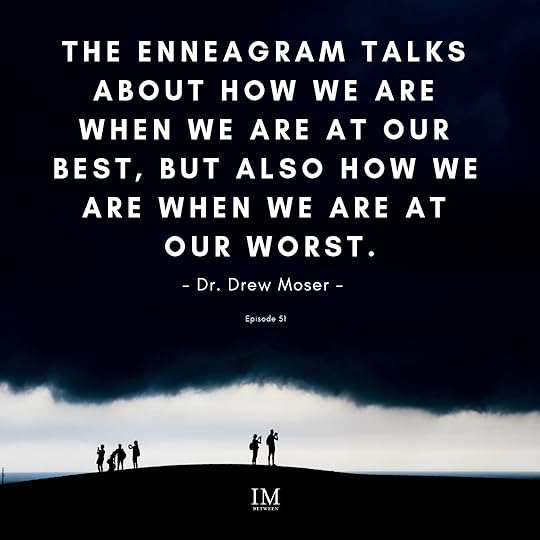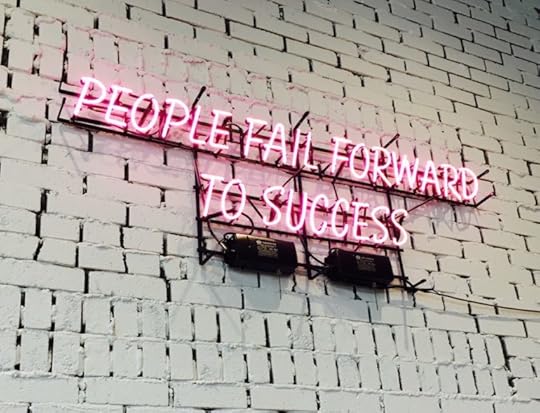Daniel Im's Blog, page 10
April 9, 2019
3 Skills to Maximize Podcast Listening

Malcolm Gladwell is famous for saying that it takes 10,000 hours to achieve world-class expertise in any skill.
Since first writing about the “10,000 Hour Rule” in his book, Outliers: The Story of Success in 2008, the theory has come under much debate. Now regardless of your viewpoint on the rule, the fact is, 10,000 hours is a lot of time. After spending that much time on one thing—while you may not be world-class or an expert—you’re probably half decent.
And if there’s anything I’ve spent 10,000 hours on, it’s probably podcasting.
I’ve listened for 10+ years, I’m a regular guest on others, and I co-host three:
New Churches Q&A Podcast: Church Planting, Multisite, Multiplication, Leadership Development, and Discipleship
5 Leadership Questions Podcast: Leadership
IMbetween Podcast: Marriage, Parenting, and Faith
Two years ago, I wrote an article on The Power of Podcasting. Last year, I wrote one entitled, Thinking of Starting a Podcast? Don’t! Until you read this…. So this year, I wanted to focus on the listener and offer you a few skills to maximize your podcast listening.
Skills to Maximize Podcast Listening:
1. Listen on Overcast
While the Apple Podcasts app has gotten better, and Spotify is just getting into it, the best free app for podcasts is Overcast by far. Here are a few reasons why:
Not only can you adjust your speed, but they have something called “Smart Speed,” which shortens silences.
They have a feature called “Voice Boost,” that normalizes the volume so every show is loud, clear, and at the same volume.
Their playlists are genius. By using the playlist feature on Overcast, I don’t have to constantly search for what to listen to next. I just cue them up and go. They also have a Smart Playlist feature that is quite intelligent.
2. Don’t listen to every episode for every podcast
I know it’s quite dangerous for me to say this. After all, not only do I co-host three podcasts, I’m also the Co-Founder and Executive Producer of the LifeWay Leadership Podcast Network, which recently hit 200,000+ downloads last month.
But it’s true.
Other than a few of my favorite shows, I always pick and choose which episodes to listen to based on the titles. There’s just not enough time to listen to everything.
So if you host your own podcast, work on your episode titles!
3. Engage with your favorite podcasts
Honestly, it makes my day whenever listeners engage with me on social media. After all, it’s not like I’m recording in front of a live audience where I can feed off of their reaction.
Podcasting can feel very solo and siloed for the hosts.
So take the time and reach out to them—it’ll make their day. Tell them what you like about their show, your favorite episodes, and suggestions for future topics and interviews! Not only will this benefit them, but it’ll engage you deeper with the show as well.
Now before you go, I’d love for you to comment below and tell me what podcasts you’re listening to!
Also, I did this last year, and the year before, but here are all the podcasts that I was interviewed on in 2018 in case you’re interested:
Group Answers Podcast: Episode 51 – Daniel Im
Stan Rodda Podcast: 050 – Vision, Strategy and Values
Pairadocs Podcast – Daniel Im
Collegiate Collective Podcast – Episode 178: Understanding and Starting a Church Planting Movement
Discipleship.org Podcast – S05 Episode 15: How to Actually Disciple Toward Maturity: A Scalable System
Vanderbloemen Podcast – How To Shift Your Perspective Of Discipleship with Daniel Im
Discipleship.org Podcast – S05 Episode 17: Creating a Discipleship Pathway for Your Church
Carey Nieuwhof Leadership Podcast – Episode 186: Daniel Im on What’s Wrong with Discipleship, False Maturity, and Bi-Vocational Ministry
WorshipLife Podcast – Episode 85: Worship in New Churches
Asian Ministries Podcast – Episode 2: Daniel Im
Everyday Exiles Podcast – Lead Forward No.25: No Silver Bullets with Daniel Im
Undiscussed Podcast – Episode 10: Marriage, Relationships and Sex with Christina and Daniel Im
Pastor Writer Podcast – Episode 44: Perseverance in Writing and Publishing
If you’re interested in having me on your podcast, you can shoot me some information here.

April 2, 2019
Top Quotes on Didn’t See It Coming by Carey Nieuwhof

I’m not sure if there’s a more helpful and accessible voice for church leaders than Carey Nieuwhof.
His podcast is on point and his newest book, Didn’t See It Coming: Overcoming the Seven Greatest Challenges That No One Expects and Everyone Experiences distills some of his greatest insights into an easy to read book for all church leaders.
You’ve probably seen his book around, but if you haven’t had time to dig into it yet—or if you need a refresher—here are my favorite quotes.
—- Oh yeah, I’m also giving away three copies of his book! Just click here to enter the giveaway! —-
“Cynicism begins not because you don’t care but because you do care.”
“What starts as self-preservation soon morphs into something more insidious. You become a bit jaded.”
“The problem with generalizing—applying on particular situation to all situations—is that the death of trust, hope, and belief is like a virus, infecting everything,”
“As you grow older, you become more of who you already are.”
“I realized that left unchecked, cynicism would win.”
“Cynicism is actually a choice.”
“Hope is one of cynicism’s first casualties.”
“An incredibly effective antidote to cynicism is curiosity. Yes, simple curiosity.”
“Feed your curiosity, and it grows. Starve it, and it withers.”
“You can’t wonder and discover when you’re in a hurry.”
“As young leader, I was convinced that competency was the key to success in life. My formula went like this: Competency determines capacity. The more competency you are, the greater your potential. The greater your potential, the greater your capacity…But a few years into my adult life, I began to notice highly competent people who became disqualified from leadership.”
“If competency doesn’t determine capacity, what does? Character does.”
“All the competency in the world can’t compensate for your lack of character. Ultimately, your character is your lid.”
“All the competency in the world can’t compensate for your lack of character. Ultimately, your character is your lid.” – @cnieuwhof
Click To Tweet
“Character, not competency, determines capacity.”
“No matter how hard you try, you can’t escape you.“
“Compromise is in you, and life brings it out of you.”
“We judge ourselves by our intentions and other people by their actions.“
“We judge ourselves by our intentions and other people by their actions.” – @cnieuwhof
Click To Tweet
“There’s a certain point when you compromise regularly enough that you decide to stop apologizing and instead start justifying. There’s a reason you are the way you are.”
“When you start justifying your bad behavior and decisions, you begin to believe your condition is inevitable.”
“Any value system worth having is focused on others, not self.”
“Character development for the most part doesn’t happen in some monastery with stone walls and dank cellars. It happens in the grind of everyday life.”
“The antidote to compromise is simply this: work twice as hard on your character as you do on your competency.”
“Every time you blame others, invent justification, or craft a fresh excuse, you evade responsibility.”
“Of all the lies we tell, the lies we tell ourselves are the deadliest.
“People won’t think less of you when you’re honest. They’ll think more of you.”
“It is not selfish to put yourself first when it comes to personal growth.”
“Solitude is a gift from God. Isolation is not—it’s a tool of the Enemy.”
“Solitude is a gift from God. Isolation is not—it’s a tool of the Enemy.” – @cnieuwhof
Click To Tweet
“What we’re facing is not a technology problem but a human problem.”
“You won’t address what you don’t confess.”
“Our lack of confession disconnects us from God, from one another, and even from ourselves.”
“The challenge is not to resist change but to learn how to thrive in the midst of it.”
“When are your past circumstances going to stop defining your present and future?”
“You can make excuses or you can make progress, but you can’t make both.”
“Unchecked, most of us live in the decade where a lot of our tastes, knowledge, and experiences were shaped. We pick na era we love and, for the most part, stay frozen there.”
“Change is the only thing that bridges the gap between who you are and who you need to be.”
“The greatest enemy of your future success is always your current success.”
“The greatest enemy of your future success is always your current success.” – @cnieuwhof
Click To Tweet
“To be successful in life, methods need to serve your mission.”
“Whether you agree with the culture or not, understanding it is a prerequisite to being able to influence it.”
“One of the best ways to earn the affection and buy-in from a younger team is to listen as much as you speak, to learn as much as you attempt to teach.”
“The key to seeing transformation take root is to keep changing, keep experimenting, keep risking.”
“The change you don’t implement often becomes something none of us wants—regret.”
“Unimplemented change will become regret.”
“Pride is, in many ways, the master sin. It’s the root of our rebellion against God, against others, and even against what’s best for us.”
“Nothing kills pride like humility does. Only humility can get you out of what pride got you into.”
“A second possible (but not desirable) way to learn humility is actually through humiliation.”
“Humiliation, by definition, is involuntary humility.”
“Scarcity creates gratitude, and most of us live in relative abundance, globally speaking.”
“Humility always keeps its notebook open.”
“Pride is like a weed, and humility is like your lawn.”
“Pride is like a weed, and humility is like your lawn.” – @cnieuwhof
Click To Tweet
“If you’re healthy, you feel things. You experience highs and lows. When I burned out, I couldn’t feel either properly anymore.”
“Burnout numbs your heart.”
“Treating small things like big things and big things like small things are both signs that something deeper is wrong.”
“Cynicism never finds a home in a healthy heart.”
“Some days, simply avoiding stupid is a win.”
“People who are burning out almost always choose self-medication over self-care.”
“I believe the very heart of the problem of burnout is spiritual. If you leave Jesus out of the cure, you leave out much of the potential healing.”
“If God wants to go deep, it’s because he wants to take you far.”
“The emptiness so many people experience in life is more intense in success than it is in failure.”
“A long time ago, someone shared with me a progression to success and accumulation…You start with more, move to better, and end up at different.”
“Workaholism is the most rewarded addiction in America today. You may get fired for drinking too much, but working too much usually gets you promoted. It will also get you a raise.”
“Workaholism is the most rewarded addiction in America today. You may get fired for drinking too much, but working too much usually gets you promoted. It will also get you a raise.” – @cnieuwhof
Click To Tweet
“Underneath the constant pursuit of more (more work, booze, pills, food, sex, or things) is an appetite. And appetites are strange things.”
“If you don’t know what’s driving your addiction, you’ll get driven back to it again and again.”
“What do I need to do (or not do) so I can live today in a way that will help me thrive tomorrow.”
“If you want to beat emptiness, find a mission that’s bigger than you.”
“God as a vending machine is bad theology, especially when you drop your dollar in and the candy bar doesn’t come out.”
“God as a vending machine is bad theology, especially when you drop your dollar in and the candy bar doesn’t come out.” – @cnieuwhof
Click To Tweet
“Prayer is not a button to be pushed; it’s a relationship to be pursued.”
“The alternative to living for yourself is dying to yourself.”
“Humility will win you what pride never will: the affection of others.”
“The Kingdom of Me is a sad kingdom. And one that leaves you feeling so empty. Die to it.”
“The more self-aware you are, the more likely you are to see it coming.”
“Self-aware people understand not only what their own emotions and actions are but also how their emotions and actions affect others.”
“When you stop using your emotions as the only filter through which you process your attitude and actions, you grow as a person.”
“If you regularly do what you were created to do, the likelihood of growing cynical, disconnected, proud, or irrelevant diminishes.”
“If you regularly do what you were created to do, the likelihood of growing cynical, disconnected, proud, or irrelevant diminishes.” – @cnieuwhof
Click To Tweet
“Self-aware people know what they’re best at but don’t brag about it. They just do it.”
“One of the deadliest mistakes you can make is to ignore your limits.”
Next Steps:
Enter the giveaway to win one of three copies of Didn’t See It Coming by Carey Nieuwhof
Listen to Episode 186 of Carey’s podcast where he interviewed me on what’s wrong with discipleship, false maturity, and bi-vocational ministry.
Share your favorite quote from this article!

March 19, 2019
Adaptive Decision Making, Change, and Leadership – Part 2
Let’s pick up from where we left on in Part 1 of this series of articles on adaptive decision making, change, and leadership. Be sure to start by reading Part 1 if you haven’t yet done so.
Over the last century, here’s the reason most churches and organizations have been able to scale and support the growth that they’ve experienced.
It’s because of the modern day “scientific management model,” which rests primarily upon two elements:
“Absolutely rigid and inflexible standards throughout your establishment.”
“That each employee of your establishment should receive every day clear-cut, definite instructions as to just what he is to do and how he is to do it, and these instructions should be exactly carried out, whether they are right or wrong.”[1]
I’m not saying that these two elements run the shop in every church and organization today. I’m just saying that they are the foundation that modern day management theory—both inside and outside the church—has been built upon, and it doesn’t work anymore because…
You can’t just set it and forget it
You can’t just keep your head down, do your work, and expect to succeed and hit your goals
Your success isn’t wholly dependent on you
If the only time you talk about development is the annual performance review, you won’t grow
If the only time you connect with your volunteers and leaders are on Sunday or in formal training environments, they won’t feel connected
If the only things you do are the things on your job description, your team won’t win
In fact, if you’re not revisiting your job description multiple times a year, it will become outdated quick
And if the only time you talk with your team members is during official team meetings, your team will move too slow
And if you’re not changing your website every 2-3 years, watch out…irrelevancy is just around the corner
You can’t just set it and forget it anymore.
Click To Tweet
In his book, Accelerate , John Kotter, the well-known change management expert says that there are two different types of organizations: networks and hierarchies.
Here’s how he explains the difference and the progression that organizations make as they move from one to the other:
Virtually all successful organizations on earth go through a very similar life cycle. They begin with a network-like structure, sort of like a solar system with a sun, planets, moons, and even satellites. Founders are at the center. Others are at various nodes working on different initiatives. Action is opportunity seeking and risk taking, all guided by a vision that people buy into. Energized individuals move quickly and with agility.
Over time, a successful organization evolves through a series of stages…into an enterprise that is structured as a hierarchy and is driven by well-known managerial processes: planning, budgeting, job defining, staffing, measuring, problem solving. With a well-structured hierarchy and with managerial processes that are driven with skill, this more mature organization can produce incredibly reliable and efficient results on a weekly, quarterly, and annual basis.”[2]
There are benefits and frustrations to both.
When it comes to the church, networks seem like small churches, don’t they? Or church plants?
And don’t hierarchies seem like larger established churches? Or the megachurch?
However, one is not better than the other. Both are needed.
And today, in order to grow and multiply your church or organization, you actually need both—a dual operating system—where you have hierarchy on the one side and network on the other.
But in order to see this dual operating system functioning well within your church, you need to carefully think through how decisions are made.
Just consider modern day warfare.
Whereas before successful missions were led by armchair generals in cigar smoke filled rooms who made the strategic decisions for everyone on and off the field—and everyone had to do exactly as he said and commanded—today, successful missions are a result of real-time decisions made on the field by commanders and soldiers who know the intent and values of the general, even when they’re not with him.
Every successful team needs to know the intent and values of the leader.
Click To Tweet
And this is precisely how General Stanley McChrystal led the U.S. forces when they were battling Al Qaeda in Iraq. Here’s how he puts it in his book, Team of Teams:
AQI was an organization native to the information-rich, densely interconnected world of the twenty-first century. It operated in ways that diverged radically from those we thought of as “correct” and “effective.” But it worked. In the course of this fight, we had to unlearn a great deal of what we thought we knew about how war—and the world—worked. We had to tear down familiar organizational structures and rebuild them along completely different lines, swapping our sturdy architecture for organic fluidity, because it was the only way to confront a rising tide of complex threats. Specifically, we restructured our force from the ground up on principles of extremely transparent information sharing (what we call “shared consciousness”) and decentralized decision-making authority (“ empowered execution”). We dissolved the barriers—the walls of our silos and the floors of our hierarchies—that had once made us efficient. We looked at the behaviors of our smallest units and found ways to extend them to an organization of thousands, spread across three continents. We became what we called “a team of teams”: a large command that captured at scale the traits of agility normally limited to small teams. Almost everything we did ran against the grain of military tradition and of general organizational practice. We abandoned many of the precepts that had helped establish our efficacy in the twentieth century, because the twenty-first century is a different game with different rules. Our struggle in Iraq in 2004 is not an exception—it is the new norm. The models of organizational success that dominated the twentieth century have their roots in the industrial revolution and, simply put, the world has changed. The pursuit of “efficiency”—getting the most with the least investment of energy, time, or money—was once a laudable goal, but being effective in today’s world is less a question of optimizing for a known (and relatively stable) set of variables than responsiveness to a constantly shifting environment. Adaptability, not efficiency, must become our central competency. [3]
Adaptability, not efficiency, must become our central competency.
Click To Tweet
In order to grow and multiply your church or organization, it’s mission critical that every one on your team becomes more obsessed with adaptability over efficiency.
This is what’s going to lead you onto the path to become a team of teams, or an organization that networks alongside its hierarchy. After all, it’s nearly impossible to predict the changes that are on their way and plan for them years in advance.
What’s more effective is developing resilience, so that you’re ready no matter what comes around the corner.
It’s mission critical that every one on your team becomes more obsessed with adaptability over efficiency.
Click To Tweet
Just consider Taipei 101.
It was the tallest tower in the world, with 101 floors, until the completion of the Burj Khalifa in Dubai in 2010. In Taipei 101, you go from the 5th to the 89th floor in 37 seconds, going 60.6 km/hr (37.7mph).
But just imagine the kind of architecture that needed to go into this to withstand the typhoons and earthquakes that are common to this area of Taiwan. In fact, Taipei 101 is only 660 ft away from a major fault line!
The structural engineers designed Taipei 101 to withstand winds of 216 km/hr (134mph), as well as the strongest earthquakes in a 2500 year cycle. They were able to build Taipei 101 to withstand all of this using:
High-performance steel construction
Columns
380 piles driven 80 m (262 ft) into the ground
A 660 tonne steel pendulum mass damper suspended from the 92nd to the 87th floor
This pendulum is designed to offset strong gusts that the building would receive
In fact, on Aug 2015, strong winds from Typhoon Soudelor swayed the damper by 100 cm!

Isn’t this amazing?
Taipei 101 is huge, yet it was built to be adaptable and flexible because the engineers knew that this is what was needed for it to survive the context and environment it was planted in.
Unlike other buildings that collapsed during typhoons, strong winds, and earthquakes, Taipei 101 was built to adapt with the changing context and winds in order to thrive.
How about your church or organization?
Are you structured as a network or a hierarchy? Do you have elements of both? And what rules the day for you? Is it adaptability or efficiency?
I love this quote by Andrew Zolli, “if we cannot control the volatile tides of change, we can learn to build better boats.”
What can you do to become more adaptable? What can your team do? What can your church or organization do?
“If we cannot control the volatile tides of change, we can learn to build better boats.” – Andrew Zolli
Click To Tweet
Endnotes:
[1] Team of Teams: New Rules of Engagement for a Complex World by General Stanley McChrystal, 211.
[2] Accelerate: Building Strategic Agility for a Faster-Moving World by John P. Kotter, 5.
[3] Team of Teams, 19-20.
March 12, 2019
Adaptive Decision Making, Change, and Leadership – Part 1
Watch this clip of a traffic intersection.
As you were watching it, what did you think was going to happen?
When I first saw this clip, it reminded me of the T-bone accident I was in as a child. I don’t really remember much around the way it happened, or what I was doing when it happened, but as a child, I flew right into the windshield of our car.
It happened when we were on our way home from the airport after picking up my mom. She had just returned after visiting family in Korea. Someone ran a stop sign and boom. Just like that, my hopes of ever becoming a doctor or rocket scientist flew right out the window…or should I stay straight into the window?
Alright, so back to the traffic intersection.
This is a video from a computer simulation that the Autonomous Intersection Management project at the University of Texas at Austin was conducting. When Peter Stone, the professor heading up this project, discovered that “25 percent of accidents and 33 percent of the thirty-three thousand auto deaths each year in America occur at intersections, and 95 percent are attributable to ‘human error,’” he and his team wanted to do something about it.
But how is this chaos better? Doesn’t this seem like a T-Bone accident just waiting to happen, rather than a way to prevent it from happening?
The interesting thing about this simulation is that every car you see here is being driven autonomously. In other words, they’re all self-driving cars.
This being the case, you can actually plot the trajectories of each car long before they arrive at the intersection, which means there’s no need for the typical breaking, stopping, and accelerating that normally characterizes four way intersections. This also means that you can get rid of traffic lights and stop signs, since every self-driving car would be communicating, sensing, and noticing the other.
To self-driving cars full of sensors and cameras, this simulation makes complete sense. To us, it doesn’t—it seems like utter chaos.
And here’s the reason.
It’s because of a thing called, “mental models.”
When it comes to traffic, and pretty much every other area of life, we have a strong sense of what’s “normal” and what’s not—these are our mental models.
The thing about mental models is that they’re a double edged sword.
They’re great since they can save us time and lead to efficiency
The downside is that they can get in the way of creativity.
But here’s the dangerous thing about them, if we’re not careful, we can actually depend on sets of mental models for so long that we completely miss all the changes that are happening around us.
And even though we ought to adapt and change, we refuse to do so, since we’re used to what has worked and what’s normal.
Even though we ought to adapt and change, we sometimes refuse to do so, since we’re used to what has worked and what’s normal.
Click To Tweet
I mean…if it worked in the past, it should continue to work today, right? If it worked in the previous church you served in, you just need to run the same playbook, and you should be good, right?
When it comes to the way that you view leadership and make decisions, how do you know what worked in the past will continue to work in the future?
Change used to be measured by centuries.
Do you remember how slow and boring history class was? Especially pre-20th century? But as the years have progressed, so has the rate of change. It’s moved from centuries, to decades, to years, to months, to days, and now, even to minutes and seconds.
Just take for example, the impact of Elon Musk’s tweet back in August 2018 that cost him $40 million and his seat as the chairman of Tesla.
Am considering taking Tesla private at $420. Funding secured.
— Elon Musk (@elonmusk) August 7, 2018
Just imagine that. One tweet where he was joking about having secured funding to take Tesla private at $420 a share gets him sued by the Securities and Exchange Commission.
The rate of change has moved from centuries, to decades, to years, to months, to days, and now, even to minutes and seconds.
Click To Tweet
The speed and rate of change has increased exponentially…and here’s how all of this affects the local church.
Do you ever feel like you’re behind?
And in that moment, when you finally catch up and breathe a sigh of relief, you turn around only to notice that “more” has already come?
And if keeping up in a rapidly changing world wasn’t challenging enough, you’re expected to grow and do more, right?
And on top of all of that, you might’ve noticed that just because something worked in the past doesn’t mean that it will work again.
Doing what you did yesterday will not get you the same results tomorrow. In other words, if you run the same playbook that you did last year to invite and put on your event, and got X number of people to show up and a Y kind of impact, you will have less people this year than you did last year.
Doing what you did yesterday will not get you the same results tomorrow.
Click To Tweet
This used to work…but it doesn’t anymore.
You can’t just put more energy and effort in and expect things to exponentially grow anymore.
We’ve moved from addition to calculus—seemingly overnight.
Next week, I’ll be sharing the reason why you can’t just set it and forget it anymore. And what we can do to adapt and change as leaders.

February 12, 2019
The Enneagram, Leadership, and Knowing Yourself

Knowing yourself has been a neglected and under-appreciated aspect of life and leadership for far too long.
Now don’t get me wrong. I’m not talking about promoting yourself, nor am I advocating navel gazing either. I’m talking about knowing yourself—your strengths, weaknesses, passions in life, the way you react under stress, how you operate within a team, and on and on.
Knowing yourself has been a neglected and under-appreciated aspect of life and leadership for far too long.
Click To Tweet
And while there seems to be a myriad of personality assessments for each and every one of those areas, what’s been missing is one that helps you identify your core motivations—the why behind it all.
Sure, the Myers Briggs might help you identify how you best recharge (introvert/extrovert), the StrengthsFinder might help you discern how you best approach tasks, and the Birkman might help you understand the best environment for you to work in, but what each of them miss is uncovering why you do what you do.
Enter: The Enneagram.
Recently, on the IMbetween Podcast that I co-host with my wife, Christina, we interviewed Dr. Drew Moser, who has been studying the Enneagram for more than a decade. In this episode, he offers a good primer on what it is, what each of the numbers mean, the wings, how you are when you’re growing and also when you’re under stress, and the perfect gift for each number.
It’s a good primer and introduction into the Enneagram universe, so I’d encourage you to check out the episode and also download our free eBook on the Perfect Gift for Every Enneagram Type.
You can either stream this episode from our website here, Episode 51, or listen in on any of the following platforms:
Apple Podcasts
Stitcher
Google Play
Spotify
February 5, 2019
The Truth Behind Fame

“Studies say four minutes of uninterrupted eye contact increases intimacy.”
So we did it. For four minutes, Christina and I looked into each other’s eyes…and it went a lot better than the first time I did it with someone else.
This someone else was a complete stranger—okay, maybe he wasn’t a complete stranger since I had met him a couple hours ago at a conference we were a part of—but that’s how it felt. And yes, it was incredibly awkward and I don’t recommend it, but I had no choice. At least he wasn’t a she. I couldn’t imagine doing this exercise with a woman who wasn’t my wife.
Nevertheless, after having gone through that deathly awkward experience where I felt inappropriately vulnerable with this stranger, I was interested to see how it would feel to do this exercise with my wife.
And I’m not being sarcastic here. I was actually excited to do this with my wife because I wanted to see what would happen. I was curious to see what I would feel and think during those four minutes of silence.
So we did it. For four minutes, we looked at each other in the eyes and here’s what I realized.
I don’t need other people to see me because I am already seen.
When Christina was looking at me in the eyes, I realized that it wasn’t because of anything I was doing. I wasn’t performing. I wasn’t speaking. I wasn’t podcasting. I wasn’t writing. I wasn’t teaching. I wasn’t leading.
I wasn’t doing anything—yet I was seen.
And for someone who is a 3 on the Enneagram, this was HUGE.
If you’re unfamiliar with the Enneagram, check out this episode, or download this free eBook that we created on the Enneagram and gifts.
Nothing I did or didn’t do (or have or haven’t done) changed anything about those four minutes—she simply saw me as Daniel Sangi Im. Not Daniel the pastor, the author, the father, the _____. No, none of that. It was just Daniel Sangi Im.
When she gave me her undivided attention—that I had done nothing to earn—it was an incredibly freeing and vulnerable experience. It was freeing because my default tendency is to prove myself and earn my worth. It was vulnerable because I didn’t do anything to deserve it, yet it was generously given. But most of all, the way she looked at me was a beautiful reflection of God’s love, care, and attention on each and every one of us.
What fame is
Recently, on the 5LQ Podcast that I co-host with Todd Adkins, we interviewed J.D. Greear about life and leadership. About mid-way through the episode, he dropped one of the most profound quotes on fame that I’ve ever come across. It’s probably at the same level of Eugene Peterson’s letter to Christian celebrities here. He was quoting his wife, Veronica, “Fame is making yourself accessible to a bunch of people you don’t really care about at the expense of those you do.”
Fame is making yourself accessible to a bunch of people you don’t really care about at the expense of those you do.
Click To Tweet
Anyone else guilty of that? Of chasing the platform? Of trying to do great things for God?
I do what I do because my life is not my own. Both Christina and I have always said that our life motto is, “Here we are Lord, send us.” We want to be about God’s kingdom and not our own.
However, somewhere along the way, there’s a pernicious trap that seems to ensnare leaders over and over again.
In living a life of service, we begin neglecting the ones who matter the most to us for the sake of the gospel. For the sake of this higher calling, we justify to ourselves that it’s okay to put in a couple extra hours, to go on that extra trip, and to say yes to another commitment. We say to ourselves, “If I’m doing God’s work, won’t he take care of my family?”
And while that is true that God will take care of your family, the fact is, you’re the only husband to your wife, or wife to your husband. And you’re the only dad to your children, or mom to your kids. Yes, God is their heavenly father, but he wants to work through you!
And that’s why, when Christina looked at me straight in the eyes, I realized that I don’t need to achieve or do more to impress Christina and my kids. I’m accepted just as I am. How much truer is this for each and everyone of us before God?
You. Just you. You are accepted just as you are by our heavenly Father.
Click To Tweet
So if “fame is making yourself accessible to a bunch of people you don’t really care about at the expense of those you do,” what are you going to do differently this week?
How do your priorities need to shift?

January 29, 2019
The Best Leaders Learn From Failure

“An inventor fails 999 times, and if he succeeds once, he’s in. He treats his failures simply as practice shots.”
Those are the words of the famous American inventor, engineer, and businessman who just happens to hold an unimpressive 186 patents—Charles Kettering.
Wow. One hundred eighty six patents!
His patents include the electrical starting motor, leaded gasoline, and the Freon refrigerant that goes in our refrigerators and air conditioning systems. This is some serious inventing he did—unlike those who win the Stupid Patent of the Month award (it’s actually a thing).
Here’s what stood out to me about this quote: Although everyone fails—especially leaders—the best leaders learn from their failures and keep on moving forward.
Although everyone fails—especially leaders—the best leaders learn from their failures and keep on moving forward.
Click To Tweet
Where will your failure take you?
When I visited the Pacific Science Center in Seattle, WA over Christmas, I came across the Wall of Failure. Just as it inspired me to keep on stepping out in faith and trying new projects, I hope it does the same for you.
Here are the names and descriptions of some of the failed leaders on the Wall of Failure who kept on moving forward. This is directly from the exhibit.
J.K. Rowling – failed author
“An unemployed, single mother on welfare whose first children’s book was rejected by all 12 major publishers.”
Albert Einstein – failed genius
“A poor student who didn’t speak until age 4 or read until age 7, Albert was considered “slow” by family and teachers and was eventually expelled from school.”
Einstein couldn’t read until 7.
Click To Tweet
Michael Jordan – failed athlete
“A somewhat promising basketball player who barely met minimum height requirements, Michael Jordan was not allowed to join his high school’s varsity team.”
Michael Jordan was too short to join his high school team.
Click To Tweet
Abraham “Abe” Lincoln – failed politician/president
“A failed businessman who also suffered a nervous breakdown, Abe Lincoln was defeated no less than six times when running for office.”
Emily Dickinson – failed poet
“A prolific but unrecognized poet; fewer than a dozen of Emily Dickinson’s 1,800 poems were published during her lifetime.”
Walter Elias “Walk” Disney – failed animator
“Fired from his job at the Kansas City Star because he “lacked imagination,” Walk Disney went on to found an animation studio called “Laugh-O-Gram Films” which went bankrupt after several years.”
Walk Disney was fired for lacking imagination.
Click To Tweet
Jack Ma – failed businessman
“After flunking preschool and secondary school, Jack Ma was turned down by Harvard 10 times before having his application rejected by over 30 different companies for jobs ranging from fast food work to entry level police positions.”
Oprah Winfrey – failed anchorwoman
“A co-anchor on Baltimore’s WJZ-TV who was fired after seven months because she was too invested in the stories she was covering.”
Oprah was fired as an anchorwoman for being too invested in her stories.
Click To Tweet
Thomas Alva Edison – failed inventor
“Considered “too stupid to learn anything” by his teachers as a youth, Thomas Edison was fired from two jobs as an adult for not being productive enough.”
Your failures don’t define you.
So rather than dwelling on the past, look up and move forward. See your failed attempts as practice shots, and just keep on going.
Who knows how God might use that failure to carve a path forward for you. And perhaps that failure is exactly what God is using to get you ready for your next chapter in life.
Your failures don’t define you.
Click To Tweet

January 8, 2019
Change, Trains, and Leadership
Your church or organization is like a train.
Recently I filmed a 90 Second Leadership video for LifeWay Leadership on this important insight about leadership and change.
I hope you enjoy it!
Click here to watch other 90 Second Leadership videos by LifeWay Leadership.
January 1, 2019
How Do You Disciple, Train, Teach, and Lead Others?
Whatever method you use is likely what was used on you.
Recently I filmed a 90 Second Leadership video for LifeWay Leadership on this important insight that reveals how we best learn.
I hope you enjoy it!
If you like what you saw on this video, I elaborate on this concept further in my book, No Silver Bullets: Five Small Shifts that will Transform Your Ministry.
Click here to watch other 90 Second Leadership videos by LifeWay Leadership.
December 17, 2018
How to Create a Vision Statement For Your Church
 There are no perfect church vision statements.
There are no perfect church vision statements.If you’re looking to change yours, or create one from scratch, the thought of copying another church’s vision statement has probably come across your mind.
Don’t do it!
While it’s fine to see how others have worded theirs for ideas and inspiration—whatever you do—don’t short circuit the process.
Now obviously, copying someone else’s vision statement would be easier and faster, but in this matter specifically, the process is as important as the outcome (I’ll explain why later on). And while the foundation for every church’s vision statement is built with the same building blocks of the Great Commission and the Great Commandment, the way you put them together needs to be different than the way the church down the road did theirs. This is because the vision statement for your church is for your church—it’s not for the church down the road! So your vision statement needs to be contextualized and worded into language that your church understands.
One more note about vision statements, and then I’ll get to why the process is as important as the outcome.
A great vision statement is like the kingdom of God—it’s already, but not yet.
It needs to be feel real and tangible, but not fully here, since vision is more about the future than the present. It’s more like a foretaste, than it is a full meal. Here’s how I describe it in my book, No Silver Bullets.
Vision is about the preferred future. It’s the ability to conceptualize a picture of a golden tomorrow that does not yet exist. It’s about seeing both the difficulties and possibilities so clearly that you can actually visualize a different reality than the one you can see with your eyes. Simply put, vision is about painting the dreams that God has laid on your heart for all to see. In order to discover those God-given dreams, you need to start by considering “everything to be a loss in view of the surpassing value of knowing Christ Jesus my Lord” (Phil. 3:8) so that you can stop wondering “what kind of mission God has for me,” and instead begin asking, “what kind of me God wants for His mission.”
Vision is about the preferred future. It’s the ability to conceptualize a picture of a golden tomorrow that does not yet exist.
Click To Tweet
So how do I create a church vision statement?
You need to start with the understanding that it doesn’t all fall on your shoulders. Your church’s vision statement isn’t something that you need to create out of thin air, or come down from the mountain with.
It already exists—your role as the leader is to mine it out of your people.
And here’s why: God has a unique role for your church in your neighborhood and city. He has brought the people in your church together specifically for a purpose. There is a unique mix of gifts, talents, and callings in your church that doesn’t exist in any other church in the world. So your role as a leader is to discover the way that God is already moving in your midst and then articulate that in a compelling and infectious way through a vision statement.
Your role as a leader is to discover the way that God is already moving in your midst and then articulate that in a compelling and infectious way through a vision statement.
Click To Tweet
But you can’t do this without prayer
I love brainstorming, whiteboarding, and writing on big sheets of paper on the wall. It’s invigorating and incredibly life giving. In fact, you can do a lot of work clarifying what is, in order to determine what can be, via exercises like these.
However, you must not and should not do this without prayer. So that trite little prayer that you do before a full day of vision work does not cut it. You need to soak and saturate the entire process in prayer, since ultimately this is about discovering God’s vision for His church, not crafting your vision for your church.
You need to soak and saturate the entire process in prayer, since ultimately this is about discovering God’s vision for His church, not crafting your vision for your church.
Click To Tweet
So, before you bring out the whiteboards, make sure you set aside time to spend in prayer and in listening to your church.
1. Spend time in prayer
Since God has a vision for His church—that you happen to be stewarding and leading at the moment—don’t you think he’d want to let you in on it? And wouldn’t prayer be the place to find out?
So before you begin whiteboarding your new vision statement, schedule a night of prayer and worship with your leadership team. Begin praying for your church, your neighborhood, your city, and the lost. Read the Scriptures, worship, pray, and spend time with the One who holds and knows the vision for your church!
Make sure that the worship is experiential, since not everyone connects with God in the same way. You can have stations for journaling, others for communion, another one for art and illustrations, and so on.
Be creative! You don’t need to end the night with a written down vision statement—in fact, that’s not the purpose. Instead, you just want to facilitate a time where your leadership team is approaching the throne of God together in worship. You’ll be amazed at the ways that God can and will move.
2. Listen to your church
As you’re praying about the vision for your church, I’d encourage you to preach a sermon series on the early church. This will not only give you an opportunity to study ecclesiology, but it will provide a forum where you can ask your congregation to share their thoughts on the church.
Throughout the weeks that you’re preaching the sermon series, schedule time to meet with a wide range of your members to get their thoughts on the church: men, women, Gen Z, millennials, Gen X, boomers, and people of different ethnicities. In fact, several of your leadership team members should do the same. If everyone takes copious notes, and then someone summarizes them before your next leadership team meeting, there will be patterns that emerge.
After you do all of that, I’d encourage you to go through the Vision Audit that I outline in chapter 7 of my book, No Silver Bullets. Here’s an image of it.
If you work through this vision audit, then do the strategy and values audit, you will be well on your way to crafting and creating a vision statement.
See what I mean when I said earlier that the process is as important as the outcome?
Without starting in prayer, spending time listening, and completing these audits, you will naturally copy another church’s vision statement, and in turn, end up missing the incredible way that God wants to speak to and through you into your community
Don’t short circuit the process.




